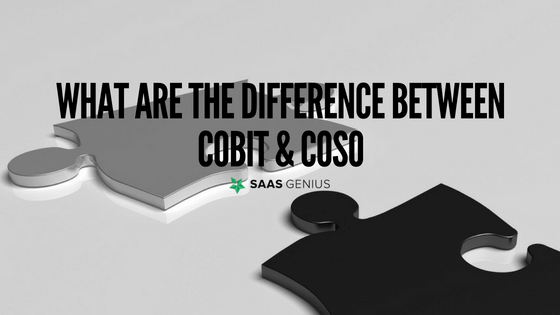COBIT and COSO shares more than the alliteration. Both COSO (Committee of Sponsoring Organizations) and COBIT (Control Objectives for Information and Related Technologies) are instrumental in managing financial reporting controls in various institutions. It is crucial that the users understand the similarities and the differences between the two organizations to create a robust synergy that will boost the internal control objectives of financial data protection. You can apply the gap analysis software to enhance the performance of the frameworks and guarantee effective data protection.
Understanding COSO
This body was established in 1985 through the effort of five professional associations including:
- Institute of Internal Auditors
- Financial Executives International
- The American Accounting Association
- The American Institute of Certified Public Accountants
- The Institute of Management Accountants
The establishment of the professional body (COSO) aimed at sponsoring the National Commission on Fraudulent Financial Reporting which would boost their initiative to fight irregular financial data presentation. It would also provide the guidance necessary in risk management. The body was empowered to achieve its objectives by developing an enterprise framework, vigorous internal control mechanisms, and fraud deterrence measures. It would work with ISACA to guarantee IT certification for the company thus boosting the security of sensitive information in an institution.

More about ISACA
While this article is primarily about COBIT and COSO, it is paramount that you understand ISACA and how it contributes to the efficiency of the two focus organizations. ISACA stands for Information Systems and Audit Control Association. The body was founded in 1967 with the aim of developing auditing control guidance and the creation of a globally recognized IT certification mechanism. This makes the body highly instrumental in ensuring that COSO prevents fraudulent activities that are primarily propagated using technology-based tools.

The Framework of COSO
The current working COSO framework was updated in 2016. The updates were aimed at enhancing efficacy in their operations. The new framework utilizes a risk management approach for managing internal controls. It’s designed to allow both the internal and external reporting mechanisms. Below are the five most crucial strategic points of the framework:
- Governance and Culture. This relates to ERM and ensures transparency in how daily activities are conducted.
- Strategy and Objective Setting. This principle requires that risks are assessed objectively
- The performance. This principle is meant to ensure an effective reporting of risks
- The Review and Revision. The relates to the internal audit and monitoring of various controls
- Information, communication, and reporting. This principle dictates that there should reliable communication mechanism between the internal and external members.
The Framework of COBIT
The framework consolidates global IT standards including ITIL, CMMI, and ISO 17799. It works closely with ISACA, to develop standards that businesses should apply to their operations to ensure safe implementation of IT strategies. COBIT has five principles that differ significantly from those of COSO. They include:
- Meeting Stakeholders Needs. This principle highlights the importance of the organizations indicating the individuals who bear risk as well as those who receive benefits. This is crucial in determining the needed resources.
- Covering the Enterprise End to End. This ensures that ERM considers the information and technologies like assets and applications thus deviating from only focusing on the IT element.
- Applying a Single Integrated Framework. The framework seeks to map several standards to a single business and governance structure.
- Ensure a Holistic Approach. This aims at integrating all the processes to create seamless flow within the institution. It brings together culture, processes, organizational structures, and policies information thus uplifting the morale of the people to successfully manage the enterprise.
- Separating Governance and Management. This principle incorporates the evaluation of methods that are ideal for offering direction. It separates tracking of activities from the people who are performing them.
Comparison between COSO and COBIT
You may have realized that the two frameworks have some similarities. Right? Well, while the similarities are obvious, the different bodies conduct varying activities for several institutions. COSO specializes in offering guidance that benefits companies when developing risk tolerances with the intention of minimizing theft and fraud. On the contrary, COBIT offers guidelines that provide best-practice controls. If your company chooses to use a financial risk reporting system that’s compatible with COSO, you can implement COBIT to develop the control landscape.
Why Use COSO and COBIT Frameworks?
You should never compromise data security and accountability. You should comply with all the frameworks that boost your data security! As such, making your systems compatible with both COSO and COBIT frameworks is a milestone for the security of your company’s data. The two frameworks make risk and governance infrastructure as well as control landscape to align with the security requirements.
COSO guarantees compliance with Sarbanes-Oxley requirements in a particular segment of the institution. On the other hand, COBIT offers a specific risk-assessment manner.
Author Bio

Ken Lynch is an enterprise software startup veteran, who has always been fascinated about what drives workers to work and how to make work more engaging. Ken founded Reciprocity to pursue just that. He has propelled Reciprocity’s success with this mission-based goal of engaging employees with the governance, risk, and compliance goals of their company in order to create more socially minded corporate citizens. Ken earned his BS in Computer Science and Electrical Engineering from MIT.
Author
Methodology
- Who?
We are SaaS experts: Our specialists constantly seek the most relevant information to help support your SaaS business. - Why?
We are passionate about users accessing fair SaaS pricing: We offer up-to-date pricing data, reviews, new tools, blogs and research to help you make informed SaaS pricing decisions. - How?
With accurate information: Our website manager tests each software to add a Genius Score using our rating methodology to each product. Our editorial team fact-check every piece of content we publish, and we use first-hand testing, value metrics and leading market data.
